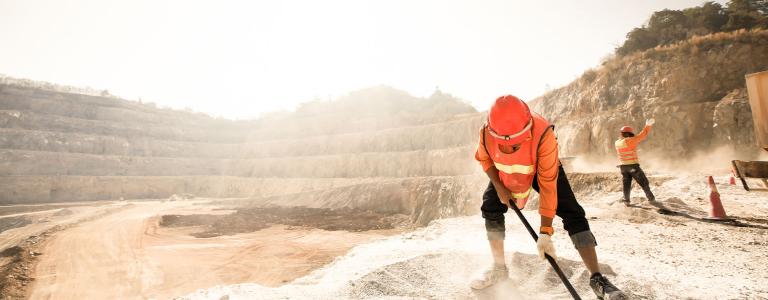EU Plans Talks With African Nations to Boost Supplies of Critical Raw Materials
The European Union is engaging in talks with African nations, starting with the Democratic Republic of Congo, to ensure a stable supply of critical raw materials and decrease reliance on China during the shift towards a greener and more digital economy.
The European Union (EU) is in negotiations with the Democratic Republic of Congo, a major global producer of copper and cobalt, as it seeks to diversify and strengthen its access to critical raw materials. The EU plans to initiate discussions with other African countries as well.
The transition toward a green and digital economy has increased reliance on critical metals. These are essential components in items such as computers, smartphones, electronic components, solar cells, batteries, and electric motors. Global extraction of these materials is limited to a few countries, among which China has a dominant position. Large-scale extraction also takes place in countries including Brazil, Russia, South Africa, and the United States.
The EU’s Critical Raw Materials Act establishes ambitious targets to develop alternative sources as part of the bloc’s efforts to reduce its dependence on China. Although the act is yet to come into force, the EU has established its 2030 targets for minerals required in its green transition: 10% of annual needs mined, 15% recycled, and 40% processed in Europe. Additionally, the EU aims to avoid relying on a single third country for more than 65% of any critical raw material.
So far, the EU has signed partnerships with Canada, Kazakhstan, Namibia, and Ukraine, and deals with Argentina and Chile are imminent. These critical materials partnerships offer opportunities for investment, collaboration on research and innovation, infrastructure development, and skills development.
A sharp rise in demand is projected for 34 raw materials, including copper, nickel, and rare earth minerals. The European Commission has estimated that the bloc will need 18 times more lithium in 2030 than in 2020 and five times more cobalt.
Elisabetta Sartorel, the EU’s policy officer on critical raw materials, said during the Zimbabwe Chamber of Mines’ annual general meeting that a delegation from the bloc would be in the Democratic Republic of Congo for discussions in June, according to Reuters. Sartorel told a virtual presentation: “We expect, in the near future, to launch negotiations with other countries in the Great Lakes region, particularly Rwanda, Uganda, Zambia, and perhaps Tanzania as well.” Once a critical materials agreement is signed, she said, a joint roadmap of concrete actions to be implemented by the EU and the partner country is drawn up.
A team of researchers from Chalmers University of Technology in Sweden recently warned that the EU faces a looming supply deficit of certain critical and strategic raw materials, such as dysprosium, neodymium, manganese, and niobium. Electrification and digitalization trends are driving a growing need for critical metals in the EU’s vehicle fleet.
While the EU acknowledges that it has considerable ground to cover to catch up with China, its critical raw materials plan highlights that 63% of the world’s cobalt—used in electric vehicles batteries—is extracted in the Democratic Republic of Congo, with 60% of it being refined in China.
You might also be interested in
IISD Annual Report 2023–2024
While IISD's reputation as a convenor, a trusted thought leader, and a go-to source on key issues within the sustainable development field is stronger than ever, the work happening outside the spotlight is just as valuable.
Senegal's Big LNG Gamble
This report explores Senegal's nascent liquefied nitrogen gas (LNG) industry by assessing the impacts associated with a new fossil fuel-based industry on the country's environment, economy, and society. It does this by responding to three questions: What have been the impacts of the development of LNG on Senegal to date? Is it viable for Senegal to invest further into an industry that is projected to decline? What risks can Senegal expect should it forge ahead with its LNG development plans?
Leveraging Digital Infrastructure for Mining Community Resilience
This report explores the socio-economic impacts and potential of new technologies in the mining sector.
The WTO and Fisheries Subsidies: Where are we, exactly?
What are the latest developments in WTO fisheries subsidies negotiations, focusing on marine conservation, community impact, and sustainable fishing practices? Tristan Irschlinger offers a comprehensive overview explaining key aspects of the agreement, ongoing discussions, and what’s at stake for global fishery sustainability.
